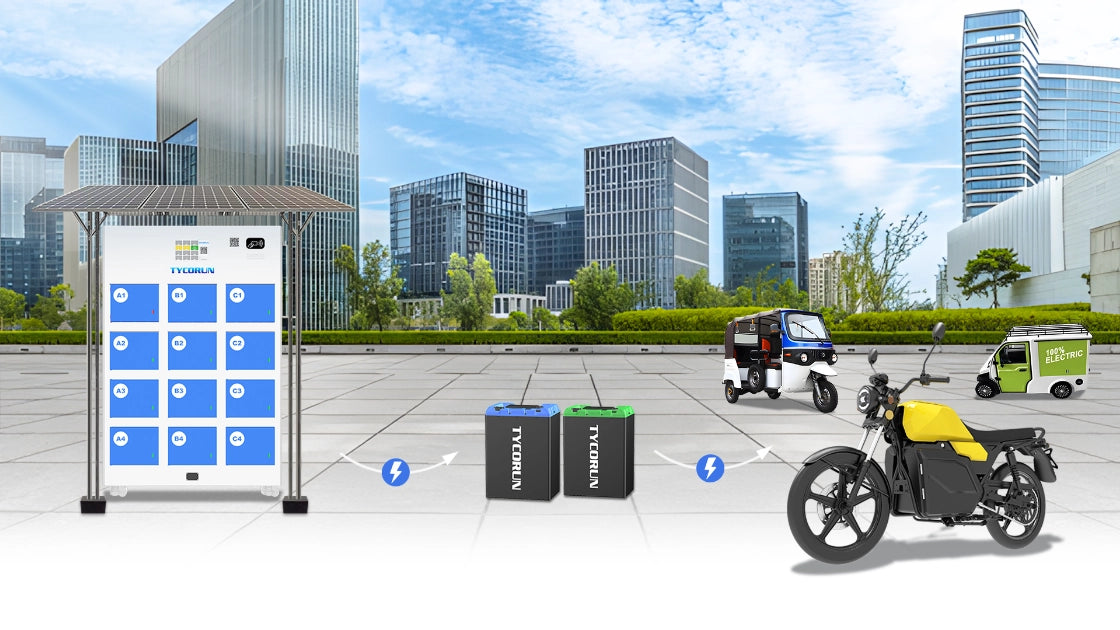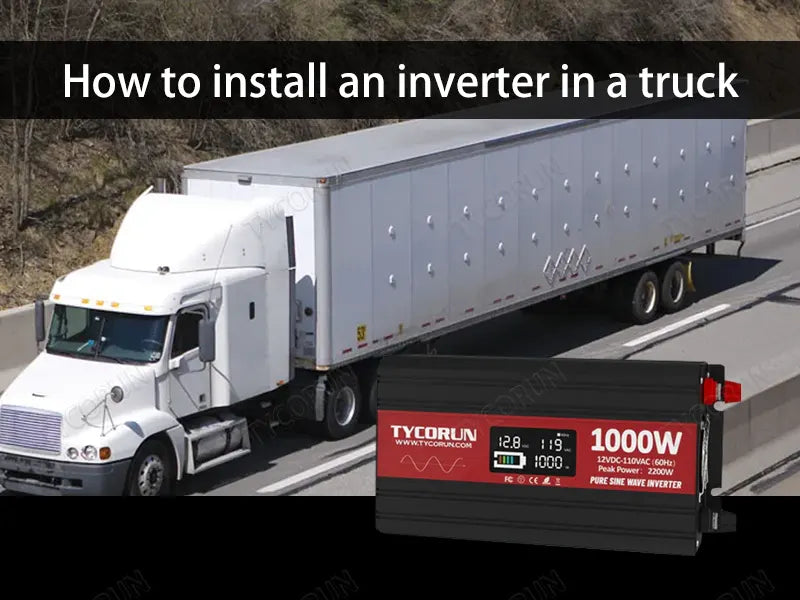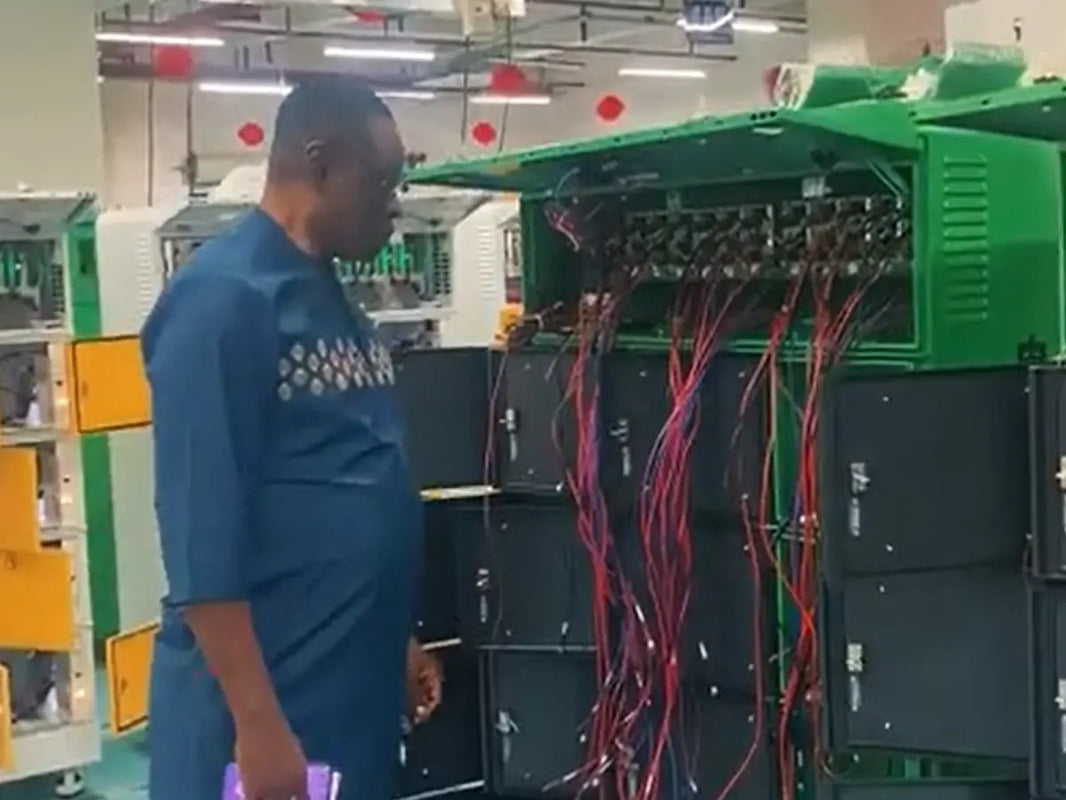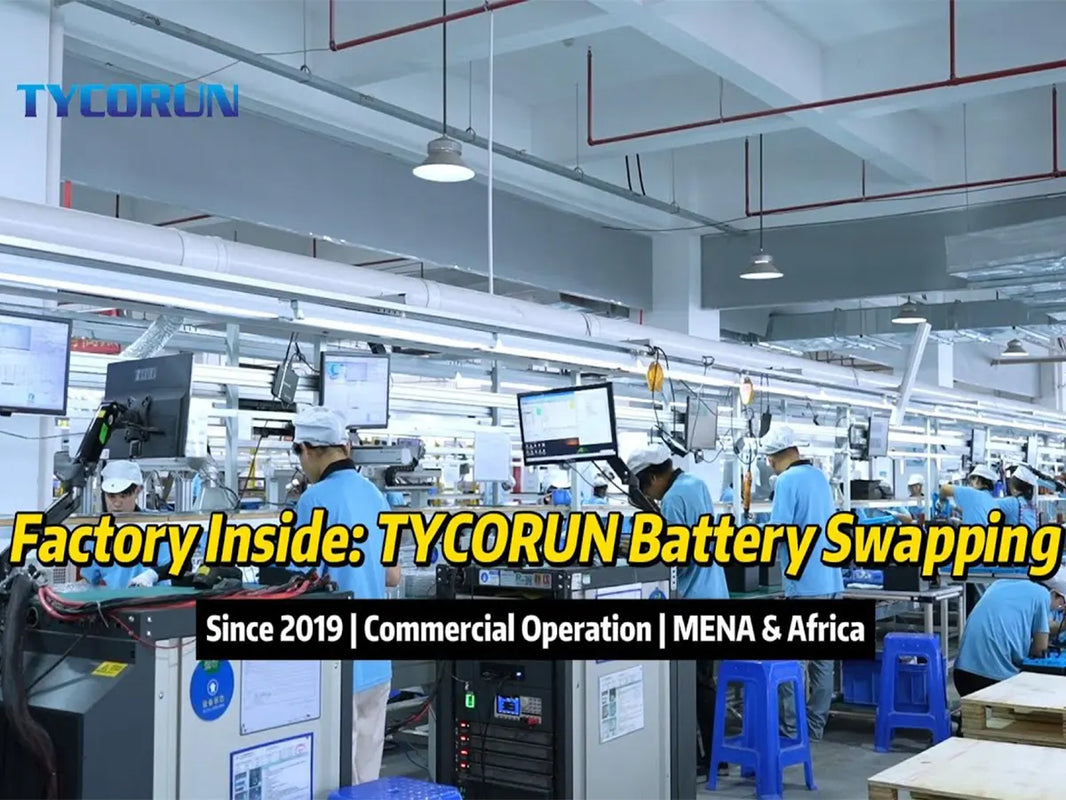
Main content:
As technology advances and our daily needs diversify, vehicle power systems have become an indispensable part of our lives. A highly efficient and safe truck inverter and battery system are crucial. This article provides a comprehensive guide on how to choose and how to install an inverter in a truck, ensuring your equipment operates both safely and efficiently.
Choosing the right inverter
Before knowing how to install an inverter in a truck, you need to figure out how to choose the right inverter. Safety should be the top priority when selecting an inverter. The role of the power inverter for truck is to convert low-voltage direct current (DC) into high-voltage alternating current (AC) to power devices. During this conversion, the DC current can become quite large, especially when using high-power devices.

If the electronic components or wiring of the inverter are of poor quality, or if the safety current-carrying capacity is insufficient, it can lead to overheating, sparks, or even fires. Since the space inside a vehicle is small and the installation location might be out of sight, this poses a significant safety risk. A simple way to judge the quality of an inverter is to feel its weight—the larger and heavier the inverter, with thicker copper wires, the better it generally is.
It's recommended to choose a pure sine wave inverter, which provides high-quality output suitable for electronic circuits that require precise waveform parameters. In vehicle electronics, some sensitive devices or those requiring high-quality power will benefit from the clean energy provided by a pure sine wave inverter. For example, vehicle charging systems, refrigerators, and medical equipment may require the high-quality power output of a pure sine wave inverter.
How to choose the right battery
When selecting an inverter battery, bigger is not always better. Using a small-capacity battery to power a high-power inverter and electrical devices can lead to rapid discharge, which not only shortens the battery’s lifespan but can also result in over-discharge, as the inverter might demand more than the battery’s rated output. These are important things to know before figuring out how to install an inverter in a truck.

Regardless of the battery type—be it a traditional lead-acid, spiral-wound, ternary lithium, or lithium iron phosphate (LFP)—you should first estimate your power needs. The larger the battery capacity, the more energy it can store. However, this also means the battery will be physically larger and heavier, which can affect the truck’s payload capacity, space layout, and cost. In terms of battery type, lithium-ion batteries are typically lighter than lead-acid batteries for the same capacity, making them more suitable for applications where space and weight are limited.
How to choose the right inverter power rating
The principle is to choose what’s appropriate—too small of an inverter won’t be able to drive your appliances, and too large would be unnecessary. Inverters themselves consume power, and vehicle power is valuable, so it’s essential not to choose an oversized inverter.
Furthermore, the inverter’s nominal power is not the same as the input power listed on your appliance. For example, if you want to power a 1000-watt rice cooker, simply choosing a 1000-watt inverter would be incorrect. You must consider the inverter’s peak power, the startup power of the load, and whether the load is inductive or resistive. Many appliances, particularly those with inductive loads, draw a large surge current when starting up—this current can be 3 to 7 times their rated power. Inverters typically provide peak power output twice their rated power, meaning a 1000-watt inverter can momentarily supply 2000 watts of power.

Therefore, to safely start and run the rice cooker, you should choose an inverter that can handle the peak startup current. If the rice cooker’s startup current is five times its rated power, you would need at least a 2000-watt inverter to accommodate this surge. Considering safety margins and potential voltage fluctuations, opting for a 2500-watt or higher inverter would be more suitable.
The best inverters recommended
|
|
500w
|
1000w
|
2000w
|
3000w
|
|
Product image
|
||||
|
Price & Discount
|
$59.90(-14%)
|
$89.99(-36%)
|
$179.90(-28%)
|
$199.99(-33%)
|
|
Rated Input Voltage
|
12VDC
|
12VDC
|
12VDC
|
12VDC |
|
Continuous Power
|
500w
|
1000w
|
2000w
|
3000w |
|
Peak Power
|
1000w |
2000w |
4000w |
6000w |
|
More information |
Click to get the details |
Click to get the details |
Click to get the details |
Click to get the details |
Different types of inverters are available from Tycorun, please check 12v power inverter 3000w, inverter 2000w pure sine wave, 1000 w inverter price, 500w pure sine wave inverter for your truck.
Ways of how to install an inverter in a truck
Direct battery connection: Connect the inverter directly to the truck’s battery, converting the DC power from the battery into AC power for the load. The advantage of this method is that you only need to carry the inverter, making it lightweight. However, you need to connect the wires each time you use it, and the load capacity is limited by the truck battery's size.
Inverter with backup battery: This setup includes the inverter and a backup battery. The battery capacity can be expanded according to your load requirements, but the backup battery needs to be charged periodically. Backup batteries are also heavy and expensive, making them impractical to carry too many.

Inverter with battery, controller, and solar panels: In this setup, solar panels can power the load and charge the battery through the inverter as long as there is sufficient sunlight. This method doesn't require carrying many batteries and is sustainable, making it suitable for long periods without access to the grid.
Process of how to install an inverter in a truck
Secure the inverter: Install the inverter in a stable position where it’s not prone to wear. Fix the inverter in a suitable spot in the truck to prevent vibration from damaging it while driving.
Connect the power cables: Connect the positive and negative power cables to the inverter, and use a fuse to protect the inverter. The fuse will blow and cut off the current in case of a short circuit due to incorrect wiring or an internal fault, protecting the inverter from damage.

Set output voltage: Set the inverter’s output voltage and frequency according to your needs, ensuring the output voltage is within a reasonable range.
Connect load devices: Connect the load devices to the inverter’s output terminals and inspect them to ensure there are no short circuits or overloads.
Start the inverter: Ensure the inverter starts up and operates stably, and connect devices to the output ports.
Precautions while you are installing an inverter in a truck
Do not replace or extend the inverter’s cables indiscriminately: The cables provided by the manufacturer meet safety standards. If you are not satisfied with them, only replace them with better, thicker, and flame-retardant cables. If extension is necessary (though not recommended), ensure the cables are of higher quality and thicker gauge, and consult a professional if needed.

Keep the inverter and battery as close as possible: The distance between the inverter and battery should be as short as possible to minimize DC power transmission loss and overheating. Ideally, the distance should be within the range of the cables provided by the inverter manufacturer. If extension is necessary, use thicker cables and consult a professional if needed.
Ensure secure connections: All connections, terminals, and nuts must be tightened securely to maximize contact area and prevent movement, reducing the risk of overheating or sparking.
Conclusion
Choosing the right truck inverter and battery as well as knowing how to install an inverter in a truck not only meets your power needs but also ensures safety. This guide should give you a clear understanding of how to select and install a truck inverter, including installation precautions. Proper configuration and correct installation of a truck inverter are key to ensuring the long-term stable operation of your equipment, allowing you to enjoy reliable power supply on the go.
Related articles: inverter price, inverter peak power, inverter lifespan





















